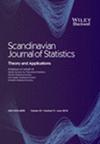将简单而精确的P值与复杂而模糊的现实联系起来(包括对“分歧与决策P值”评论的反驳)
IF 1
4区 数学
Q3 STATISTICS & PROBABILITY
引用次数: 7
摘要
数学是解决现实世界问题的有限组成部分,因为它只表达了当我们所有的假设都是正确的情况下预期是正确的,包括无所不在且经常不正确的隐含假设。统计方法充斥着隐含的假设,当这些假设的结果被用来制定政策时,违反这些假设可能会危及生命。其中包括在数据生成、管理、分析和报告中存在人类平等或公正。这些假设对应的是合作、能力、中立和正直的水平,而这些水平往往比我们愿意相信的要少。考虑到这个严酷的现实,我们应该问一下,我们可以赋予P值、“统计显著性”声明、“置信区间”和后验概率什么意义(如果有的话),这些都是用来决定如何呈现(或旋转)分析数据的讨论。P值和CI本身不能检验任何假设,也不能衡量结果的显著性或我们对结果的信心。否则的感觉是一种持续的文化错误,由统计和研究界的大部分人通过误导性的术语延续下去。所谓的推论统计只有在明确地从关于真实数据生成器的因果故事(如随机化)中推导出来时才能在上下文中解释,并且只有当这些故事基于生成数据的物理机制的有效和公开文档时才能变得可靠。如果没有这些保证,对统计结果的传统解释就会变成有害的虚构,需要用对数据和模型关系更为谨慎的描述来取代。本文章由计算机程序翻译,如有差异,请以英文原文为准。
Connecting simple and precise P‐values to complex and ambiguous realities (includes rejoinder to comments on “Divergence vs. decision P‐values”)
Mathematics is a limited component of solutions to real‐world problems, as it expresses only what is expected to be true if all our assumptions are correct, including implicit assumptions that are omnipresent and often incorrect. Statistical methods are rife with implicit assumptions whose violation can be life‐threatening when results from them are used to set policy. Among them are that there is human equipoise or unbiasedness in data generation, management, analysis, and reporting. These assumptions correspond to levels of cooperation, competence, neutrality, and integrity that are absent more often than we would like to believe. Given this harsh reality, we should ask what meaning, if any, we can assign to the P‐values, “statistical significance” declarations, “confidence” intervals, and posterior probabilities that are used to decide what and how to present (or spin) discussions of analyzed data. By themselves, P‐values and CI do not test any hypothesis, nor do they measure the significance of results or the confidence we should have in them. The sense otherwise is an ongoing cultural error perpetuated by large segments of the statistical and research community via misleading terminology. So‐called inferential statistics can only become contextually interpretable when derived explicitly from causal stories about the real data generator (such as randomization), and can only become reliable when those stories are based on valid and public documentation of the physical mechanisms that generated the data. Absent these assurances, traditional interpretations of statistical results become pernicious fictions that need to be replaced by far more circumspect descriptions of data and model relations.
求助全文
通过发布文献求助,成功后即可免费获取论文全文。
去求助
来源期刊

Scandinavian Journal of Statistics
数学-统计学与概率论
CiteScore
1.80
自引率
0.00%
发文量
61
审稿时长
6-12 weeks
期刊介绍:
The Scandinavian Journal of Statistics is internationally recognised as one of the leading statistical journals in the world. It was founded in 1974 by four Scandinavian statistical societies. Today more than eighty per cent of the manuscripts are submitted from outside Scandinavia.
It is an international journal devoted to reporting significant and innovative original contributions to statistical methodology, both theory and applications.
The journal specializes in statistical modelling showing particular appreciation of the underlying substantive research problems.
The emergence of specialized methods for analysing longitudinal and spatial data is just one example of an area of important methodological development in which the Scandinavian Journal of Statistics has a particular niche.
 求助内容:
求助内容: 应助结果提醒方式:
应助结果提醒方式:


